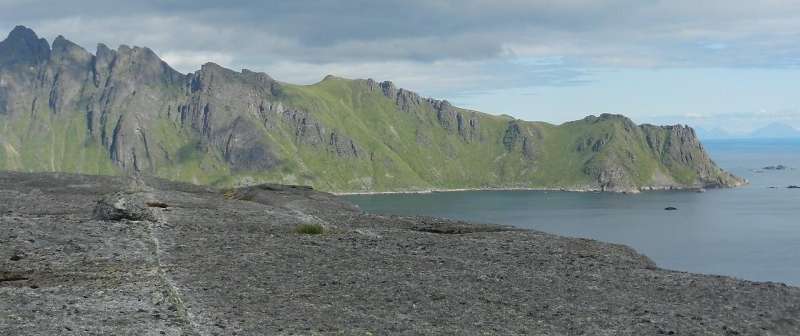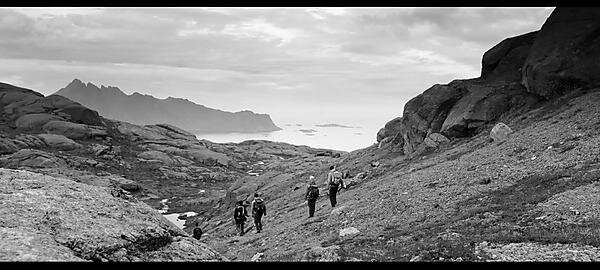'Fossil earthquakes' offer new insight into seismic activity deep below Earth's surface

A major international study has shed new light on the mechanisms through which earthquakes are triggered up to 40km beneath the earth's surface.
While such earthquakes are unusual, because rocks at those depth are expected to creep slowly and aseismically, they account for around 30 percent of intracontinental seismic activity. Recent examples include a significant proportion of seismicity in the Himalaya as well as aftershocks associated with the 2001 Bhuj earthquake in India.
However, very little is presently known about what causes them, in large part due to the fact that any effects are normally hidden deep underground.
The current study, published in Nature Communications and funded by the Natural Environment Research Council, sought to understand how such deep earthquakes may be generated.
They showed that earthquake ruptures may be encouraged by the interaction of different shear zones that are creeping slowly and aseismically. This interaction loads the adjacent blocks of stiff rocks in the deep crust, until they cannot sustain the rising stress anymore, and snap—generating earthquakes.
Emphasising observations of quite complex networks created by earthquake-generated faults, they suggest that this context is characterised by repeating cycles of deformation, with long-term slow creep on the shear zones punctuated by episodic earthquakes.
Although only a transient component of such deformation cycles, the earthquakes release a significant proportion of the accumulated stress across the region.
The research was led by the University of Plymouth (UK) and University of Oslo (Norway), with scientists conducting geological observations of seismic structures in exhumed lower crustal rocks on the Lofoten Islands.

The region is home to one of the few well-exposed large sections of exhumed continental lower crust in the world, exposed during the opening of the North Atlantic Ocean.
Scientists spent several months in the region, conducting a detailed analysis of the exposed rock and in particular pristine pseudotachylytes (solidified melt produced during seismic slip regarded as 'fossil earthquakes') which decorate fault sets linking adjacent or intersecting shear zones.
They also collected samples from the region which were then analysed using cutting edge technology in the University's Plymouth Electron Microscopy Centre.
Lead author Dr. Lucy Campbell, Post-Doctoral Research Fellow at the University of Plymouth, said:
"The Lofoten Islands provide an almost unique location in which to examine the impact of earthquakes in the lower crust. But by looking at sections of exposed rock less than 15 metres wide, we were able to see examples of slow-forming rock deformation working to trigger earthquakes generated up to 30km beneath the surface. The model we have now developed provides a novel explanation of the causes and effects of such earthquakes that could be applied at many locations where they occur."
Project lead Dr. Luca Menegon, Associate Professor at the University of Plymouth and the University of Oslo, added:
"Deep earthquakes can be as destructive as those nucleating closer to the Earth's surface. They often occur in highly populated areas in the interior of the continents, like in Central Asia for example. But while a lot is known about what causes seismic activity in the upper crust, we know far less about those which occur lower. This study gives us a fascinating insight into what is happening deep below the Earth's surface, and our challenge is now to take this research forward and see if we can use it to make at-risk communities more aware of the dangers posed by such activity."
As part of the study, scientists also worked with University of Plymouth filmmaker Heidi Morstang to produce a 60-minute documentary film about their work. Pseudotachylyte premiered at the 2019 Bergen International Film Festival, and will be distributed internationally once it has screened at various other festivals globally.
The study, "Earthquake nucleation in the lower crust by local stress amplification by Campbell et al," is published in Nature Communications.
More information: L. R. Campbell et al. Earthquake nucleation in the lower crust by local stress amplification, Nature Communications (2020). DOI: 10.1038/s41467-020-15150-x
Journal information: Nature Communications
Provided by University of Plymouth


















